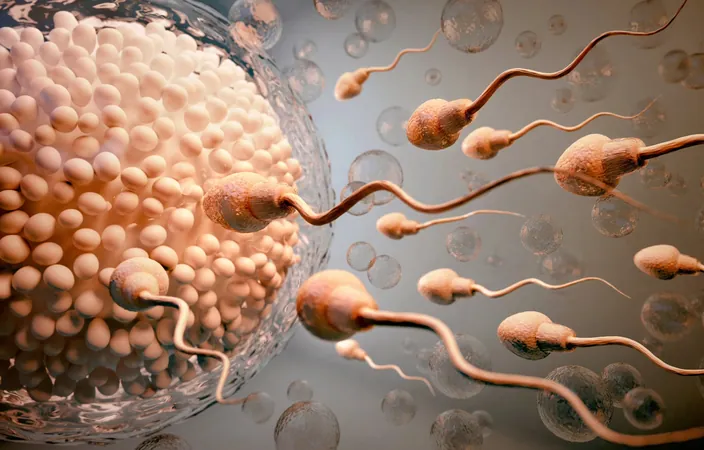
Microplastics Found in Human Reproductive Fluids: A Cause for Concern?
2025-07-05
Author: Li
Alarming Discovery of Microplastics in Human Eggs and Sperm
In a shocking new study revealed at the European Society of Human Reproduction and Embryology meeting, researchers have detected tiny plastic particles in the fluids surrounding human eggs and sperm. Led by Dr. Emilio Gómez-Sánchez from Next Fertility in Spain, the team discovered these microplastics in the bodily fluids of nearly 70% of women and over 55% of men tested.
What Are Microplastics Doing in Our Bodies?
These tiny fragments, often no wider than a human hair, are made from polymers like polytetrafluoroethylene (commonly found in non-stick cookware) and polypropylene (used in food packaging). The findings highlight not just an environmental issue but a potential direct health risk, especially concerning fertility.
Tracing the Path of Plastic Exposure
Plastics enter our bodies through ingestion, inhalation, and even skin exposure. Everyday items can release microscopic dust when warmed, scratched, or left in sunlight, allowing these particles to slip into our systems. Studies show that these pollutants can cross the gut and even the blood-brain barrier.
A Dangerous Impact on Fertility
The implications for reproduction are troubling. Laboratory studies on rodents indicate that exposure to microplastics can damage sperm DNA and disrupt hormonal functions critical for reproduction. Given that human eggs mature over several months, chronic exposure to these materials could prove particularly harmful.
Disturbing Stats About Plastic in Reproductive Fluids
The study revealed that polytetrafluoroethylene was found in 31% of egg samples and 41% of semen samples, while polypropylene and polystyrene were also detected. With global plastic production soaring—from 2 million tons in 1950 to 460 million tons today—our bodies may be overwhelmed by increasing levels of toxic waste.
Microplastics: A Hidden Threat?
Professor Carlos Calhaz-Jorge from the University of Lisbon stresses the need for further investigations into how microplastics may be compromising fertility. The research team plans to explore connections between plastic exposure and embryo health, potentially helping of couples facing fertility challenges.
Ways to Reduce Plastic Exposure
In light of these findings, experts recommend adopting simple lifestyle changes such as using glass or stainless steel containers instead of plastic, and opting for non-plastic kitchenware. Air purifiers may also help reduce airborne plastic fibers.
The Bigger Picture: Protecting Our Health from Plastics
While personal efforts are essential, public health advocates stress we must address the larger issue of rampant plastic production. With international negotiations underway to establish a global treaty to curb plastic output, there’s hope that meaningful change can be made for the protection of human health.
Conclusion: A Call to Action
As we uncover more about the pervasive nature of microplastics, it becomes increasingly clear that they pose serious risks to human health, particularly in terms of reproductive vitality. The evidence is mounting, urging us to reconsider our reliance on plastics before it’s too late.



 Brasil (PT)
Brasil (PT)
 Canada (EN)
Canada (EN)
 Chile (ES)
Chile (ES)
 Česko (CS)
Česko (CS)
 대한민국 (KO)
대한민국 (KO)
 España (ES)
España (ES)
 France (FR)
France (FR)
 Hong Kong (EN)
Hong Kong (EN)
 Italia (IT)
Italia (IT)
 日本 (JA)
日本 (JA)
 Magyarország (HU)
Magyarország (HU)
 Norge (NO)
Norge (NO)
 Polska (PL)
Polska (PL)
 Schweiz (DE)
Schweiz (DE)
 Singapore (EN)
Singapore (EN)
 Sverige (SV)
Sverige (SV)
 Suomi (FI)
Suomi (FI)
 Türkiye (TR)
Türkiye (TR)
 الإمارات العربية المتحدة (AR)
الإمارات العربية المتحدة (AR)